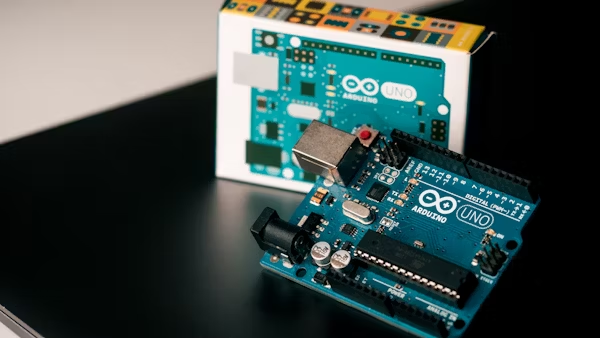In the rapidly evolving world of technology, compact, efficient, and multifunctional devices have become essential. One such groundbreaking creation is the Antennino—a smart, versatile board inspired by Arduino but designed to do much more than just basic microcontroller tasks. Combining wireless communication, sensor integration, and a flexible design, Antennino is carving its niche in the Internet of Things (IoT) and embedded system communities. This article explores everything you need to know about Antennino, its features, capabilities, and why it is becoming a favorite for tech enthusiasts and developers alike.
What is Antennino? An Overview
Antennino is a clever blend of two concepts: the antenna for wireless communication and Arduino for flexible, programmable microcontroller technology. At its core, it is a low-cost, energy-efficient device that uses an Atmel microcontroller chip, the same technology that powers many traditional Arduino boards. However, Antennino extends beyond a typical Arduino by integrating a communication interface and a variety of sensors directly into the board.
This combination means the Antennino can gather data from its surroundings through sensors and transmit this information wirelessly. The device is designed to interact with other modules or data collection points, which makes it highly adaptable for numerous applications, from smart homes and environmental monitoring to industrial automation.
Key Features That Make Antennino Stand Out
One of the most attractive aspects of Antennino is its compatibility with the well-known Arduino Integrated Development Environment (IDE). Developers who are already familiar with Arduino programming can jump right into working with Antennino without needing to learn new languages or tools. This ease of use lowers the barrier to entry for beginners while providing advanced users the flexibility to create sophisticated projects.
Beyond compatibility, the Antennino board comes equipped with a built-in communication bus. This allows it to interface seamlessly with multiple sensors, enabling real-time data acquisition. The wireless communication link embedded in the device ensures it can send and receive data without the need for cumbersome wires, offering greater mobility and simplifying deployment.
Additionally, Antennino is designed to be multirole. Depending on how it is configured, it can function either as a remote node collecting data or as a gateway that aggregates information from several sensors or devices. This adaptability enhances its usability in a wide range of scenarios.
How Antennino Works: Inside the Technology
At the heart of Antennino is an Atmel microcontroller, known for its robustness and efficiency. This chip controls the board’s operations, including reading data from sensors, processing the information, and managing communication protocols.
The onboard communication bus is a key feature that connects multiple sensor modules to the microcontroller. Sensors could include anything from temperature, humidity, and light sensors to more complex environmental or motion detectors. By integrating these sensors directly, Antennino can monitor various parameters without additional external components.
Wireless communication is managed through an antenna system embedded in the board. This system supports sending collected data to a central unit or receiving instructions remotely. Thanks to this feature, Antennino devices can be distributed over a wide area and still maintain reliable communication links.
Programming the board is as straightforward as coding for a typical Arduino. Users write their code in the Arduino IDE, upload it to the Antennino, and the device performs the programmed tasks. This simplicity combined with powerful hardware makes Antennino an excellent tool for prototyping and deploying IoT projects.
Applications of Antennino in Real Life
The versatility of Antennino allows it to be used in a multitude of domains. In smart homes, it can function as a sensor node that monitors environmental conditions and controls home automation systems wirelessly. Its low power consumption ensures that it can operate continuously without demanding frequent battery replacements.
In industrial settings, Antennino’s ability to act as a gateway or remote node makes it invaluable for monitoring machinery and environmental factors. Real-time data collection helps in preventive maintenance and reduces downtime.
Environmental monitoring is another area where Antennino shines. Whether deployed in forests, agricultural fields, or urban environments, it can track various parameters like temperature, humidity, air quality, and more, providing valuable data for research and management.
For hobbyists and educators, Antennino offers an accessible platform for learning about wireless communication, sensors, and embedded programming. Its Arduino compatibility means that existing Arduino projects can often be adapted to use Antennino with minimal changes.
Advantages of Using Antennino
One major advantage of Antennino is its cost-effectiveness. Being affordable makes it accessible for hobbyists, educators, startups, and even established companies seeking inexpensive solutions for monitoring and communication.
The low power consumption is crucial for many IoT devices that rely on batteries or solar power, allowing Antennino to run for long periods without maintenance.
The multirole flexibility means the same board can serve different functions depending on the project needs. This saves cost and complexity by reducing the number of different devices required.
Its compatibility with the Arduino IDE removes learning hurdles and speeds up development cycles. The vast Arduino community also provides extensive resources, examples, and libraries that can be leveraged when working with Antennino.
Challenges and Considerations When Using Antennino
While Antennino is an impressive device, it is important to consider some practical limitations. The communication range might be limited depending on the wireless technology used and environmental factors like walls or interference. Planning for these constraints is essential when deploying large networks.
As with any sensor-based system, the accuracy and reliability of data depend heavily on sensor quality and calibration. Users need to ensure proper sensor selection and maintenance to get meaningful results.
The board’s design prioritizes low cost and low power, which might limit processing power and memory capacity compared to more expensive microcontroller boards. For complex computations or large data storage needs, Antennino might need to be paired with additional devices or gateways.
How to Get Started with Antennino
Starting with Antennino is straightforward, especially if you have experience with Arduino. First, acquire the Antennin’o board and compatible sensors suited for your project. Then, install the Arduino IDE on your computer.
Connect the Antennin’o board via USB and configure it in the IDE as you would with a standard Arduino. Load sample codes or create your own programs to read sensor data and transmit it wirelessly.
Thanks to its communication bus, you can expand your setup by attaching multiple sensors without complex wiring. Experiment with the wireless link by setting up remote nodes and gateways to see the Antennin’o in action across a network.
Various online communities and documentation provide support and project ideas, making the learning curve smoother.
The Future of Antennino and Similar Devices
As IoT continues to grow and demand for efficient, affordable wireless sensor nodes increases, devices like Antennin’o are set to play an increasingly significant role. Their low cost and flexible design make them perfect candidates for large-scale deployments where thousands of sensors need to communicate seamlessly.
Improvements in wireless protocols, energy harvesting techniques, and sensor technology will further enhance Antennino’s capabilities. We can expect to see more integrated features such as enhanced security, edge computing power, and AI-enabled sensor analysis built into future versions.
The open-source and Arduino-compatible nature of Antennin’o will continue to foster innovation, community-driven improvements, and widespread adoption.
Conclusion
Antennin’o represents a smart, affordable, and flexible solution for wireless sensor networks and IoT projects. Combining the ease of Arduino programming with integrated sensors and wireless communication, it offers both hobbyists and professionals a powerful tool to develop and deploy innovative applications. Its multirole capability, low power usage, and cost-effectiveness make it a standout device in the growing world of embedded electronics and IoT.
Whether you are building a smart home system, industrial monitoring network, or a research platform, Antennin’o provides a reliable foundation to gather and transmit data efficiently. As technology advances, this versatile board is poised to be a key player in the connected world of tomorrow.
FAQs About Antennino
What microcontroller does Antennino use?
Antennino is based on an Atmel microcontroller, the same family used in many Arduino boards.
Is Antennino compatible with Arduino IDE?
Yes, you can program Antennino using the traditional Arduino IDE, making development easy and accessible.
Can Antennino work wirelessly?
Absolutely, it includes an embedded antenna system for wireless communication with other devices.
What kind of sensors can be connected to Antennino?
Various sensors, including temperature, humidity, light, and motion sensors, can be integrated via its communication bus.
Can Antennino act as both a sensor and a gateway?
Yes, its multirole design allows it to function as a remote sensor node or as a central data collector.
Is Antennino suitable for beginners?
Definitely, especially for those familiar with Arduino, it’s a user-friendly platform to start learning about wireless sensor networks.











